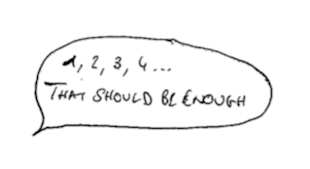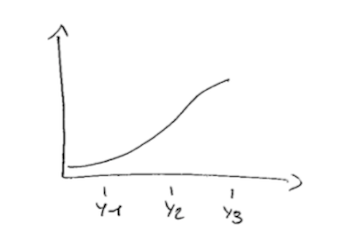There’s something that the most successful brands do well:
They leverage existing beliefs to tell stories.
That’s because a person’s way of viewing the world is a major indicator of the decisions they make and the types of stories that resonate with them.
(Some call these beliefs “mindset”. In Positioning, Al Ries used the term “customers’ minds”. In All Marketers Are Liars, Seth Godin used the term “worldview” that I like the most, as the word is self-explanatory.)
As a marketer or innovator, using worldviews to look at your market helps you understand what stories resonate with your target customers, what products and services they consider buying, and why.
(This article has been inspired by my experience growing GoudronBlanc, helping entrepreneurs build businesses, and the great work of Seth Godin and Al Ries).
Let me first dig into what worldviews are.
Then, I’ll explain how you can use worldviews to create products and services that people want, figure out the right positioning strategy, and tell stories that spread.
Of course, these reflections on storytelling and marketing include real-world examples.
What worldviews mean in innovation and marketing
Worldviews are the beliefs, values, and opinions your customers hold about the world.
Marketers use worldviews as an effective way to segment a market and identify opportunities for new products and services.
In many cases, worldviews are a better alternative to demographics. That’s because what people believe to be true can be a more accurate predictor of future behaviours compared to age, gender, or socioeconomic attributes.
To explain how it works, here’s an example from the fashion industry.
Using worldviews to shape the storytelling of a brand
Since 2000, many factors were accelerating the progress of fast fashion in Europe, e.g. the 2008 crisis, the rise of e-commerce, the growth of Zara and Uniqlo, etc.).
A huge part of the market had a specific worldview: people valued buying cheap clothes, often.
In 2011, I started working on creating a fashion brand, GoudronBlanc. Looking at the market, I realised that the “fast fashion” worldview was driving the prices down. It was an arms race among big retailers, i.e. not a good space for a new business.
By doing some insight gathering and using worldviews as a way to segment the market, I found that there was an emerging worldview. And it was great news as people sharing this worldview seemed to be underserved.
This was the “buy less, buy better” worldview.
It appeared that more and more men wanted to buy better quality clothes. They valued quality over quantity and were willing to pay more for having clothes that fit better and last longer.
Then, with more nuances, I spotted that within this worldview, there was a worldview of men who thought it was cool to wear T-shirts at the office.
I was getting close to something interesting to tell a story that would resonate.
The insight was the inspiration that led to the creation of GoudronBlanc. It helped me tell the right story to my target customers. In 2012, we launched with a range of high quality T-shirts that men love wearing at the office.
The story we tell, the product, and the customer experience are all tailored in a way that fits the worldview we want to target.
Looking at demographics to segment the market would never have got me there. When you analyse sales now, there is very little correlation between any demographic variables and who buys GoudronBlanc T-shirts. But what most of them share is the same worldview.
It should be clearer now:
Worldviews can help you spot opportunities, create the right product/service, and tell a story that will resonate with the people you want to serve. It is the strong foundation of a good positioning strategy.
And for that, you need to target resonating worldviews.

What are resonating worldviews?
Worldviews can be a powerful storytelling tool for businesses. To be useful, worldviews need to help you achieve one thing:
They should encourage your ideas and stories to spread at an affordable cost.
“Marketing succeeds when enough people with similar worldviews come together in a way that allows marketers to reach them cost-effectively.”
– Seth Godin, All Marketers Are Liars
A resonating worldview is a belief, value, or opinion that:
- already exists (it’s expensive and very risky to create worldviews from scratch);
- enough people share (big enough target segment in the market);
- shared by people who talk to each other (a tribe);
- is growing (it spreads among the population).

1. An existing worldview
The smartest business people avoid falling fall into the trap of trying to change people’s worldviews.
“People don’t want to change their worldview. They like it, they embrace it, and they want it to be reinforced.”
– Seth Godin, All Marketers Are Liars
Successful businesses rarely create new trends.
Instead, they surf on the wave and encourage the worldview to grow.
You can observe a similar process again and again. The founders get some insight that uncovers an emerging worldview. Then, they create something and tell a story that are likely to fit this particular worldview. They experiment their way into fitting this worldview (i.e. getting to product/market fit). And when they feel there’s enough traction, they start growing the worldview faster.
“There’s a common idea that in some way fashion designers get together in a room and decide what the fashion will be next year. That’s a pretty fundamental misunderstanding. Rather, they propose what might fit the zeitgeist.
Sometimes that’s incremental and sometimes it’s a radical break – sometimes the pendulum needs to swing from one extreme to another. Sometimes they get it wrong, but when they get it right it captures an age.”
– Ben Evans, Fashion, Maslow, and Facebook’s control of social
Here’s a common mistake:
We often think that a business created a totally new worldview from scratch. Most of the time, we missed the fact that they started with a small, emerging worldview small and progressively grew this worldview.
It is much easier to build a product or service based on what some people already believe and value.

2. Enough people…
This is common sense: if you want to grow a business, you need a big enough market.
The question “what is big enough?” depends on your ambitions, your business model, what your investors are expecting…

3. …but small enough: a tribe
The key part here is small enough.
It is appealing to please everyone. But a startup needs to focus on a tight community of early adopters, i.e. a tribe.
In marketing, a tribe is group of people who are linked by shared beliefs, a worldview. These are people who do yoga, cycle to work, do indoor climbing, follow a paleo diet… and will tell you everything about how they embrace their worldviews.
They frequently talk to each other (online or offline) and share stories and ideas about their lifestyles and worldviews.
This is particularly powerful!
A tribe will make it so much easier to spread the stories of your product or service.

4. A growing worldview
Another obvious one.
Useful worldviews are the ones that can spread within the market. And this is where your company can help.
Yoga was already a thing when Lululemon started in 1998. But not as much as it is now.
They jumped on this emerging worldview and accelerated its growth. They were hosting free yoga classes, helped people find studios where they live, sponsored trainers… This led Lululemon to sell for $1.79 billion of yoga-specific clothes and accessories in 2015.
It is important to spot an existing worldview with good potential for growth, though it’s tricky to be able to assess how big it can become.
The difficulty is that there’s limited data on emerging worldviews. Spotting them requires to identify patterns and nuances in your insight. It can be very tricky.
5. One last thing, actually…
Useful worldviews almost always exclude part of the market.
This is the by-product of targeting a tribe.
Different segments of customers have different worldviews. And, most of the time, they are polarising.
Think about McDonald’s:
- For some people, McDonald’s means Happy Meal, Big Mac, and nice moments with friends or family;
- For others, McDonald’s means saturated fat, too much carbs, and junk food.
Of course, this is a simplified view of the market. But here’s the question:
If you were running McDonald’s, would you try to please both worldviews?
How worldviews fit with storytelling

Here’s what my poorly-drawn schema explains.
Get good insight
Gathering insight helps you spot the worldviews that sit in your market. Some are obvious. But most emerging worldviews come from nuances spotted in qualitative and quantitative data.
A worldview becomes the platform on which you build your positioning strategy.
Tell the right story
And you communicate your positioning strategy by telling the stories that fit the worldview you want to target.
This is through your stories and customer experience that you position your value proposition in the minds of your customers.
GoPro used stories to position its camera
I mentioned GoPro in this reflection about the new 4 Ps of marketing.
That’s because GoPro is a great example of a brand that was positioned using stories that resonated with a growing worldview.
GoPro doesn’t target 20-to-30-year-old men. Age isn’t a meaningful way of segmenting their market. Instead, the brand focuses on a worldview that perceives extreme sports, as a means to personal achievement.
And GoPro addresses this worldview using stories.
As a result, men of all age resonate with the way GoPro frames its stories. When they watch a GoPro video on YouTube, they feel like the video was made for them.
But it goes beyond. Since extreme sport practitioners are a tribe, they are all connected online (forums, YouTube…) and in real life. So when they practice their favourite sports together, it makes it very easy for the “GoPro story” to spread.
The example I just described isn’t a magic formula. It’s an example that aims at illustrating what I’ve explained. And I hope that it will also inspire your work.
So what’s the next step for you?
It can be difficult to leverage worldviews to create the right value proposition, and define your storytelling and marketing strategy.
So here’s what you can start doing:
While you are gathering insight, you can try to spot the worldviews that sit in your market. There are useful questions you can ask yourself:
- What do our potential customers strongly believe to be true?
- What do they value? What seems to be irrational?
- How do people perceive the world today?
- Which are the beliefs that contrast with the rest of the market?
- Have we heard or seen something surprising or unusual?
Answering these questions should lead you to a better understanding of your market. It will make it easier to create a product that really fits what people want and tell stories that will resonate with them.
And don’t forget
Worlview is a tool.
Spotting emerging worldviews isn’t a necessary phase of the innovation process. But it can be a very useful one.
Not every success story was built on a worldview, though many have been.
There many cases in which successful businesses took the following path:
- They identify a tribe who shares an existing worldview.
- They create a product or service and tell a story that is likely fit this worldview.
- They iterate until it really fits the worldview.
- Then, once they reached product/market fit, they focus on growing this worldview.
So what is the worldview that you are targeting? What story are you telling your target customers?